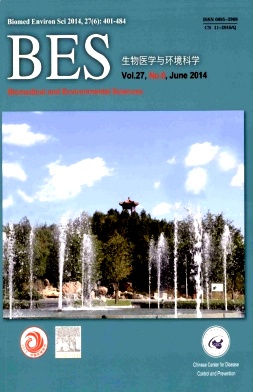H2S Protecting against Lung Injury following Limb Ischemia-reperfusion by Alleviating Inflammation and Water Transport Abnormality in Rats
doi: 10.3967/bes2014.070
-
Key words:
- Hydrogen sulfide /
- Limb Ischemia-reperfusion /
- Toll-like receptors /
- Nuclear Factor-κB /
- Aquaporin-1 /
- Aquaporin-5
Abstract: Objective To investigate the effect of H2S on lower limb ischemia-reperfusion (LIR) induced lung injury and explore the underlying mechanism.
Methods Wistar rats were randomly divided into control group, IR group, IR+Sodium Hydrosulphide (NaHS) group and IR+DL-propargylglycine (PPG) group. IR group as lung injury model induced by LIR were given 4 h reperfusion following 4 h ischemia of bilateral hindlimbs with rubber bands. NaHS (0.78 mg/kg) as exogenous H2S donor and PPG (60 mg/kg) which can suppress endogenous H2S production were administrated before LIR, respectively. The lungs were removed for histologic analysis, the determination of wet-to-dry weight ratios and the measurement of mRNA and protein levels of aquaporin-1 (AQP1), aquaporin-5 (AQP5) as indexes of water transport abnormality, and mRNA and protein levels of Toll-like receptor 4 (TLR4), myeloid differentiation primary-response gene 88 (MyD88) and p-NF-κB as indexes of inflammation.
Results LIR induced lung injury was accompanied with upregulation of TLR4-Myd88-NF-κB pathway and downregulation of AQP1/AQP5. NaHS pre-treatment reduced lung injury with increasing AQP1/AQP5 expression and inhibition of TLR4-Myd88-NF-κB pathway, but PPG adjusted AQP1/AQP5 and TLR4 pathway to the opposite side and exacerbated lung injury.
Conclusion Endogenous H2S, TLR4-Myd88-NF-κB pathway and AQP1/AQP5 were involved in LIR induced lung injury. Increased H2S would alleviate lung injury and the effect is at least partially depend on the adjustment of TLR4-Myd88-NF-κB pathway and AQP1/AQP5 expression to reduce inflammatory reaction and lessen pulmonary edema.
| Citation: | QI Ying Chun, CHEN Wen, LI Xiao Ling, WANG Yu Wei, XIE Xiao Hua. H2S Protecting against Lung Injury following Limb Ischemia-reperfusion by Alleviating Inflammation and Water Transport Abnormality in Rats[J]. Biomedical and Environmental Sciences, 2014, 27(6): 410-418. doi: 10.3967/bes2014.070 |







 Quick Links
Quick Links
 DownLoad:
DownLoad: